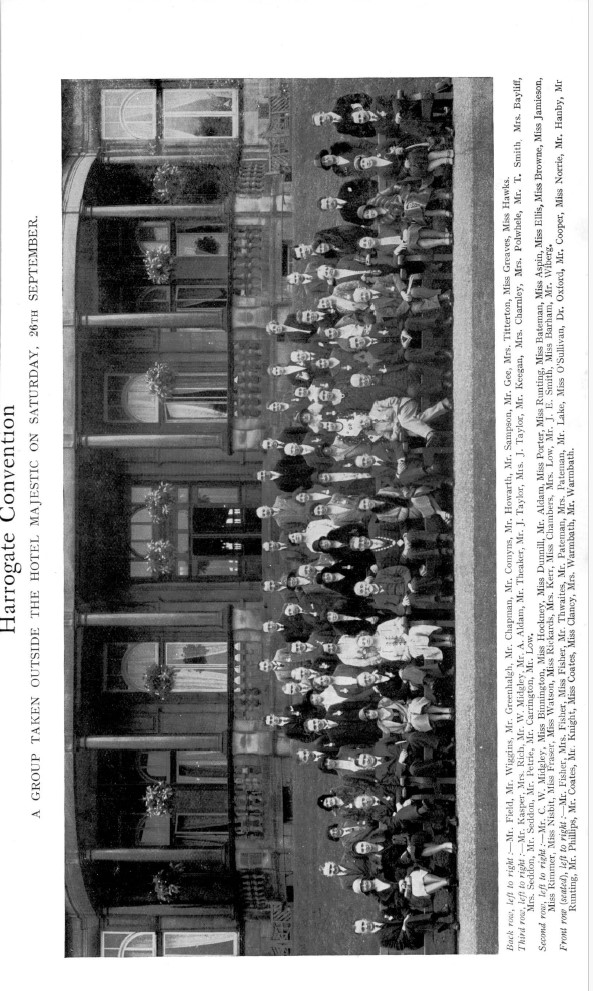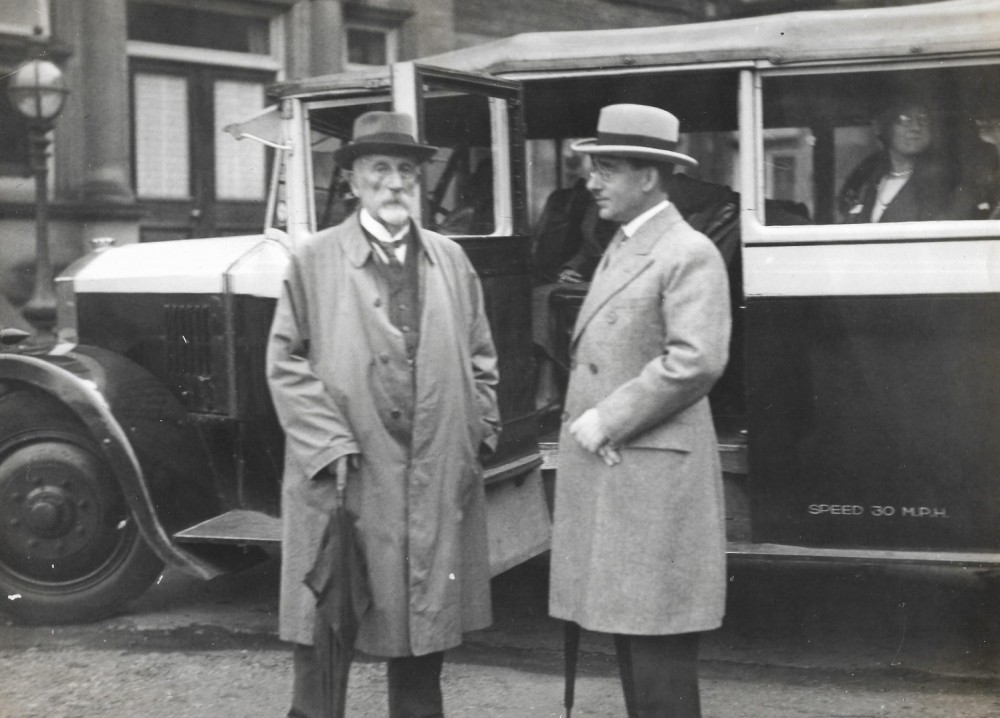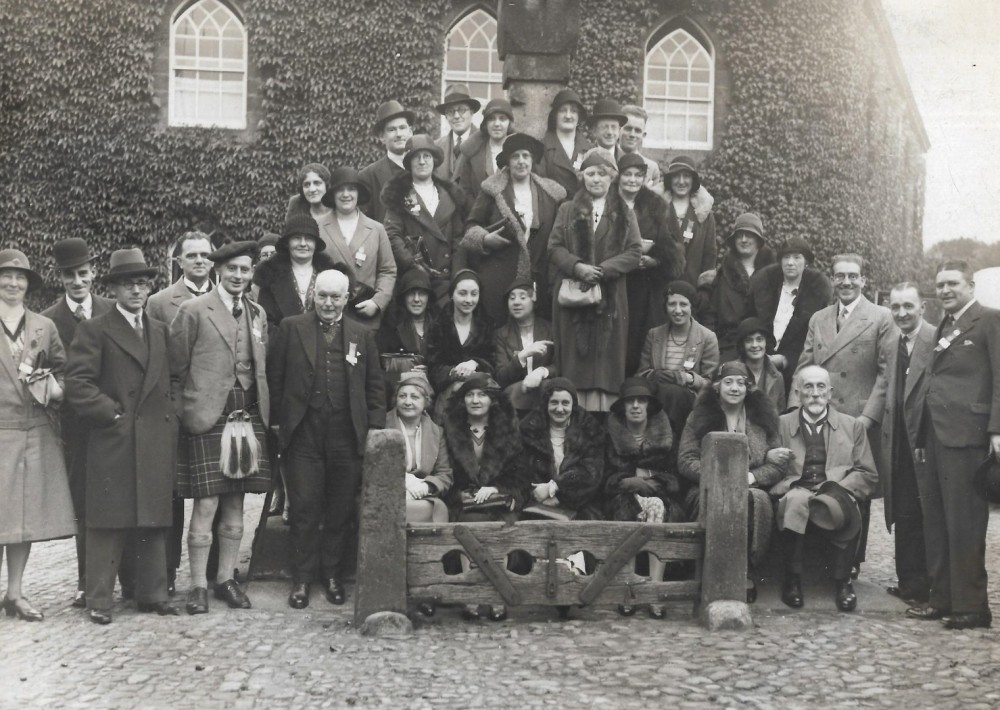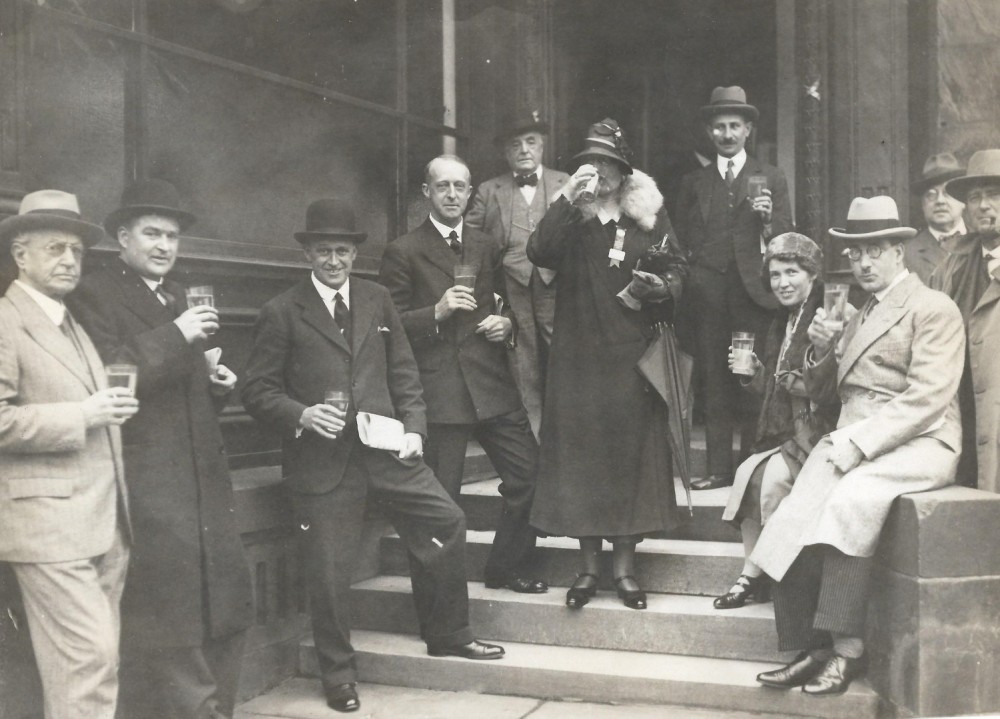Harrogate 1931

In just over a fortnight, we will be welcoming members to our Annual Conference at the Harrogate Convention Centre. But it is not the first time that podiatrists have gathered in Harrogate.
The Sixth Provincial Convention of the Incorporated Society of Chiropodists opened at the Hotel Majestic, Harrogate, on Thursday 24 September 1931 and ran for three days. It was was clearly an important occasion and one that was regarded as a great opportunity for establishing and strengthening professional connections, for while The Chiropodist reported that the Convention opened officially at 7.00pm,
"it might almost be said to have begun on the 1.40 train from King's Cross, which carried most of the members from London and the south of England. Many old acquaintances met again after a long parting, and many newcomers realised the warmth of fellowship that animates the society".
Indeed, in his opening address, the President, Mr George F Cooper, reinforced the importance of these relationships in his wish to "meet you all individually, and hope that you will give me that pleasure before we leave."
We don't know exactly how many attended the Convention, but a group photograph shows around 70 attendees among them Miss Norrie, founding member of the Society and of the Edinburgh Foot Clinic, Mr Hanby, a later President of the Society (1945-1956), and Mr Runting, one of the founder members of the London Foot Hospital.
Why Harrogate?
Harrogate in the 1930s was of course "one of the most beautiful and efficient spas in the world", "famed for its remarkable health-giving mineral waters" (F J C Broome), and perhaps the association with good health was one of the reasons for meeting in Harrogate.
It was also undoubtedly a popular and fashionable holiday resort, making it an attractive location for the Convention. F J C Broome wrote:
"It is one of the beauty spots of England, it is a favourite holiday resort both of young and old, it is a centre for motor and walking tours to some of the most delightful vales and dales in the kingdom .... it is second to none because of its wonderfully bracing air, its pure natural water and its perfect sanitation."
A road trip, a civic welcome and the Royal Baths
From The Chiropodist's account of the Convention, it is clear that the three days were planned to make full use of all that Harrogate and its neighbourhood had to offer. After the President's welcome and introductory lectures on the first evening, the following morning
"... the members of the Convention assembled at 9.15 outside the Hotel Majestic, where they entered coaches for a country tour of exceptional interest, embracing Ripley Village, Brimham Rocks, Fountains Abbey and Fountains Hall, Ripon, Boroughbridge, York and Knaresborough."
This surprisingly long day-trip included lunch at the Station Hotel in York, and visits to York Minster and Knaresborough Castle.
The President and Dr Oxford are pictured below, prior to the motor tour, and below that, a group photograph.

Returning to Harrogate in time for tea, members then received a lecture on Some abnormal swellings of the feet, before proceeding to their next engagement, a Civic Welcome by the Mayor of Harrogate, hosted at the Royal Baths and including a short tour of the Baths. A further lecture was given later that evening, by Mr Norman C Lake, a Fellow of the Royal College of Surgeons, on Chiropody in relation to the Medical Profession. This drew the second day of the Convention to a close.

The Convention Luncheon
The final day of the Convention began with an informal breakfast "at which we had a very useful exchange of ideas". But after the extensive social programme and civic welcome of the previous day, the key engagement of the final day was the prestigious Convention Luncheon, hosted by the President and attended by distinguished guests including civic dignatories, such as the Mayor and Mayoress, and guests from other professions who had addressed the gathering. The Chiropodist tells us that around 110 people attended.
After the Loyal Toast to His Majesty the King, a further toast was proposed to "The Town of Harrogate". Once again, the importance of the town in which they had chosen to meet was discussed at some length, including the discovery of the springs in 1600, the growth of Harrogate as a spa town and the development of accompanying medical traditions. Poems were recited and medical practices of the time discussed.
But the Luncheon ended on a slightly controversial note. The "Toast to the Society" was proposed by Dr W H Maxell Telling, Fellow of the Royal College of Physicians. He noted the Society's great pride in its membership of over 500, but thought that the number was "hopelessly inadequate".
"The state of the public foot was such that a membership of 500 efficient practitioners did no more than scratch the surface of the problem, and the number required to be trebled, quadrupled, multiplied many times over before the Society could with any adequacy do all the work that it ought to be called on to do. Unfortunately the public did not recognise its pedal shortcomings, but if it did ...it would flock to the Society in numbers which would lead to a much more rapid increase in membership. The Society was too modest; it did not advertise enough. The public as a whole did not know of it. How was that to be altered?"
In response, the President commented that since the Bye-laws of Incorporation had been granted nearly twenty years ago:
"the Society had advanced slowly, but he ventured to say, surely. It had advanced slowly because its Founders had recognised that its strength and the measure of its service to the public lay in efficiency rather than quantity, and that a sound training was the first essential. It had continued to build up its organisation, placing good work and ethical conduct in the forefront of its programme."
"The Society, like every other young and striving organisation, had its difficulties, but these would only spur it on to greater efforts. There was a great future for chiropody, and the best was yet to come."
The final lecture of the Convention was on Backache and painful feet; the value of chiropody during the treatment of women's diseases, by Dr Muriel Keyes, gynaecologist from the Royal Baths Hospital and Rawson Convalescent Home, with a vote of thanks proposed by Miss Norrie.
A final word: every member should attend!
The final word about the Convention must surely go to the Chairman of the Yorkshire Branch, J S Fisher, who reflected on its success in a letter to the Editor of The Chiropodist the following month:
"I am sure that we who attended ... feel increasingly the benefit, fellowship, mutual help and uplift derived from these gatherings."
"We discover that those people from so and so are really not so bad as we thought them; and Mr Thingummy whom we thought such a big pot is really quite approachable. We get the benefit of contact with the President and Officers of the Society, the mutual interchange of ideas and notions with each other, the 'spreading of the gospel' ... the increasing sympathy and understanding of the members of the medical profession - in fact every encouragement for a continuance of these functions, a justification for the request that every member should attend the Autumn Conference, even if it means sacrificing the ordinary holiday."
Podiatry 2024
This year's Annual Conference and Exhibition returns to Harrogate from 28-30 November. Find out about it here. Tickets will be available until midday on 22 November.
